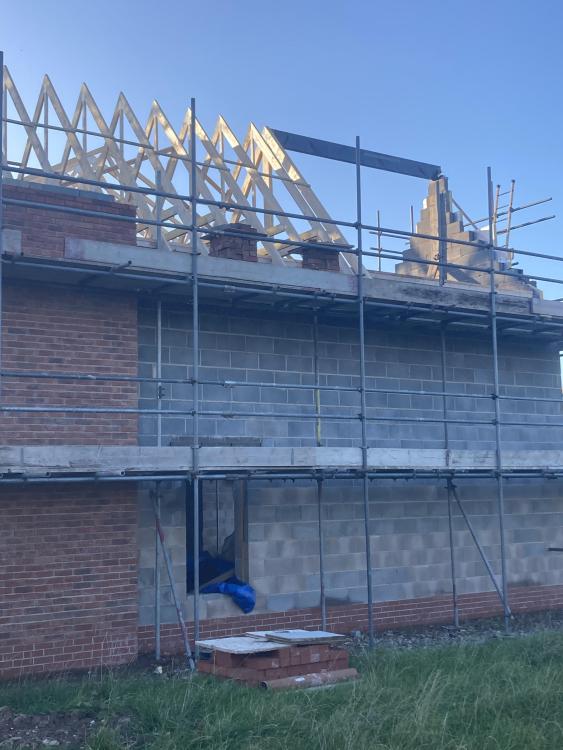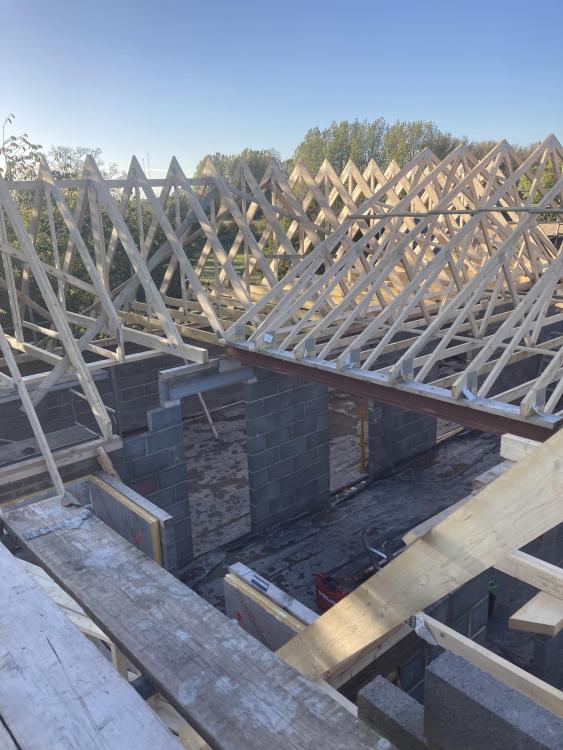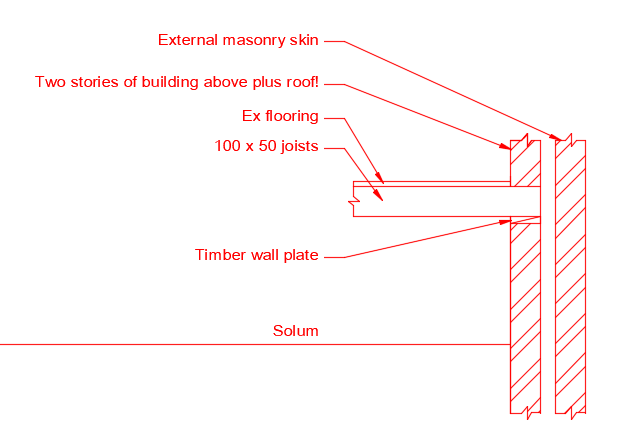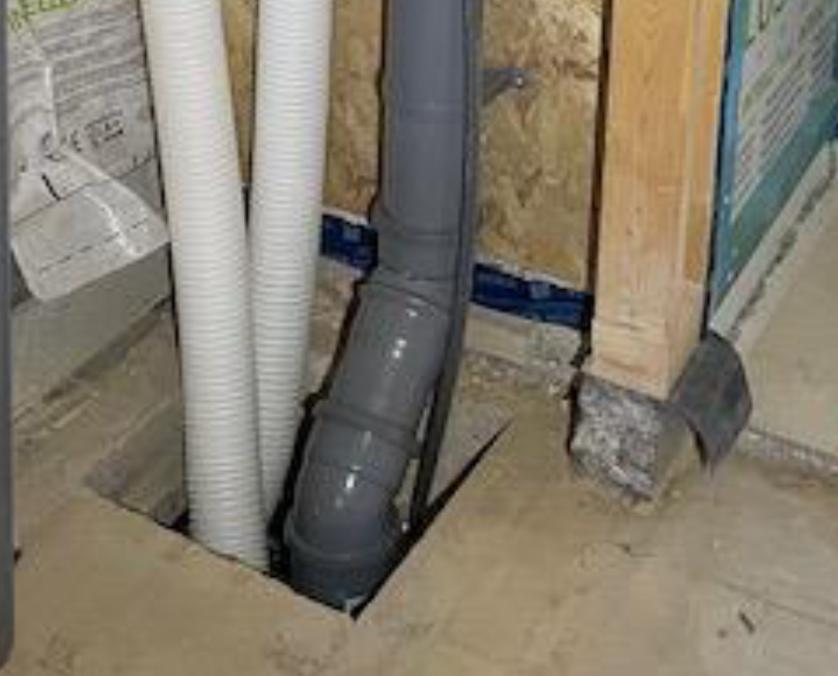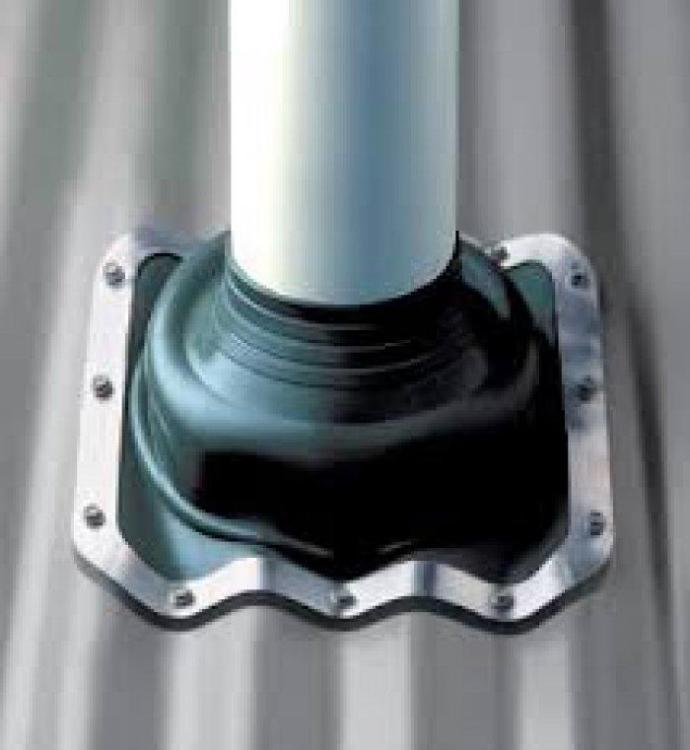Leaderboard
Popular Content
Showing content with the highest reputation on 10/14/22 in all areas
-
Just watched last nights grand designs, where they had a site break in. Damaged three large sliding doors to steal some power tools. so I thought I would just add a bit of my philosophy from running a business in London for twenty years. Our yard used to get ransacked regularly, windows smashed on trucks to steal the change from the ashtray, the answer was to leave the trucks open, we still got ransacked but they took £4 in loose change and it didn’t cost me £70 for a side window. My house site is the same. My front door is unlocked, the back sliders are open with a very visible gap, there is nothing in the house apart from my radio and a chop saw, I don’t take the chop saw out because it is screwed to a bench and I cannot be bothered. So if a scrote comes on to site, he can walk in freely and take the radio, if he’s feeling really clever he can unscrew the saw. Total stolen £400. Damage caused hopefully £0. If some scumbag sticks a crowbar down the side of my front door it’s going to cost me at least £2500 to pull the frame out and replace, loads of agro with the insurance company. So the doors unlocked. Just my way of dealing with it.3 points
-
Not your house fabric, your atmosphere. Take a chilled glass of water from the fridge. Put it on a table in your extension. Look at the condensation forming on the outside of the glass. Now think how warm the glass & contents would have to be for this not to happen. Now think about the surface temperature of your door reveal.3 points
-
2 points
-
Everything is slowly falling in to place ready for the demolition, apart from the contractor who seems to have had a better offer and now is not interested in the job. The services are almost gone, the demolition notice is in and the asbestos will be out soon. So, DIY demolition? I suspect it is fraught with real and imaginary dangers but is there any reason why I shouldn’t crack on with it (when all the other i’s are dotted and t’s crossed). I have a mass of free labour that is desperate to get started. Any advice on how to go about this? What are the traps beyond the obvious roof/wall crushing the work force?1 point
-
1 point
-
Hi there, My first post is unfortunately age-old and has been covered on other posts, however, being in costa del Orkney makes it impossible to get reasonably priced hired fencing and logistically tricky to buy second-hand. We are expecting a long drawn-out build in stages given the current instability with the mortgage rates (the joys of planning a self-build as first-time buyers...) Does anyone have any experience using any alternative form of temporary boundary? After ploughing through the BS technical handbook and HSE guidance - it doesn't seem to give any guidance apart from a clear boundary with signage and the like. As far as I can see our site insurance also doesn't give specific definitions of what a site boundary should be. Sites seem to vary up here, all of the building firms obviously put up fencing, other sites seem to make do with the falling down dyke being a 'clear boundary', and some don't seem to bother! The site itself is within a small village there is already a low 1m timber fence around 2 edges. I am tempted by the idea of removing the fence and putting in new 2.4m (1.8m h) posts with temporary mesh (plastic or galv deer fencing stuff) with barrier tape and ample signage, then using a small number of bought heras panels for more moveable site access. Once the house is built we can then cross batten to form a 'wind allowing' more formal boundary - if someone can talk me out of that idea that would be brilliant... Just wanted to also say thank you to everyone on the forum, the discussions have been invaluable to us so far! We have a fully serviced site and are planning a SIPs build on as much of a budget as possible... (am I the only one that is finding it cheaper at the moment?). After a long drawn-out planning and BW debacle, we are aiming to get contractors in to do the underbuild this winter and then start on the frame in the Spring/summer. Best, J1 point
-
I too have a 1960's house, want to insulate the living room floor. Good news for me is that it's not a kitchen or bathroom so moisture levels will be not too severe. Problem I have is that the joists are built into the inner leaf of masonry on a timber wall plate. Yes.. the inner skin is carrying all the roof load plus two stories of masonry above! I'm still trying to get my head around the best way of doing this. Big worry is that if I cause damp / condensation in the wall plate the whole house will drop! Will keep mulling it over. There must be a way! That is as far as I have got to date, like you that list is a journey.1 point
-
I just squished in friction fit ROCKWOOL in 2 staggered layers, didn’t add any membrane due to pipes,cables and having to lie on my back to fit insulation. better than what it was!1 point
-
Very hard to predict at the moment, I've heard Network Rail are trying to lock in prices on some of the more specialist work by not going to competetive tender, on the other hand on the domestic side I'm inclined to think things might cool off significantly. In any event having been in the construction industry for nearly forty years, about half that time being a contractor it seems that every seven years or so we get a big down turn.. you set yourself up, maybe buy some plant, even a bigger yard!.. employ more folk and just as it seems you have cracked it and made a little money it all goes downhill fast! That is me using the seaweed test, and if you believe in that we are due for a downturn anyway. Good news ahead for the self builder.. but problem is you can't rely on the plot / house value increasing to make the finances look good. If you do it right though and spend the time on good design and cost control you should still weather most storms.1 point
-
These new Samsungs are quite chunky, 1270x1018x530 mm to be precise. That's a volume of 0.69m3. I don't know where you live but the limit for permitted development in England is 0.6m3. Having to apply for planning permission would put me right off.1 point
-
I did the same in one of my early vans. I couldn't get the key out of the ignition or lock the doors so I had some musical airhorns fitted on a switch. When the ignition was turned on they went off. All was OK until I got stopped by the police one day with a barn door strapped to my roof through the windows. After a gentle telling off for a dangerous load the policeman was walking back to his car and I accidentally set the horns off with my knee. He wasn't impressed. Moral of the story. Allow for the frame when rebuilding an opening to re use the doors.1 point
-
When I lived on a small holding we heard of farms having chickens and ducks taken (just before Christmas) so I rigged a game keepers trap (a shotgun cartridge filled with magnesium linked to a tripwire. It worked, but, it was early one morning I heard it go off to look out the window to see my wife with her hands over her ears stumbling around the yard. I had to remove it 🙄1 point
-
My first car, I fitted a DIY car alarm, but I was not interested in flashing the lights or sounding some siren, no, it had a huge set of air horns under the drivers seat. The theory was not to attract attention of passers by, but to make it physically painful to remain inside the car if they set the alarm off.1 point
-
Today the phone line transferred to the VOIP service with the new provider. That should end all my services with BT. Just got to wait for the final bill to see if they have tried to sting me for any silly charges. I have had clarification of equipment returns, the only thing they want me to return is a 4G router that they sent to give coverage during a line fault. Well they are welcome to it back, it never worked at all. They are sending a postage paid return bag to send that back at no cost to me. No mention of returning the router so I won't.1 point
-
yep shop around. Timber prices are falling in my area, Subbies are constantly chasing work from me, my scaffolder who carries out work on large housing sites says that they are slowing right down. One of the 2 PV companies that i am talking to have increased their price by nearly 30% since the last quote in June. Kitchen companies that have quoted are contacting me to see if I am ready.. As a brickwork contractor work continues to come in and I'm overloaded but it can change quickly. I usually find out in March if its going to be a busy year but this year it was more like June. Who knows for 2023 ? I'd love to have a crystal ball. It would help me to decide whether to build 1 house 2 houses or no houses following my demolition in January. At the moment we wait patiently and see whilst still planning the build route.1 point
-
Add glass to the list of energy intensive materials. My 2G man has told me to hold off replacing units unless it is urgent. As a perhaps typical data point, Wickes 2.4m 3x2 CLS is about 15% below 5-6 months ago, which was when I think I bought some and what I paid.1 point
-
In May I was paying £6.50 a meter for 9 x 2 joists. Now £4.60. (Plus VAT) I am still probably being ripped off but it is less painful.1 point
-
Some down sides Turn down issues when not at min outside temp. Steady state has a higher minimum kWh loading due to larger motors. Bigger starting in rush current to get motors turning. Bigger cables, fuses etc all adding incremental cost increases Higher minimum water flow requirements. Requiring larger diameter pipe runs, considerable cost adder. Much more likelihood of short cycling, as min flow requirements are not met. Floor hot spots, due higher than ideal water flow temps More likelihood you will need a buffer, offsetting some efficiency gains elsewhere. Big ugly unit in garden instead of a smaller ugly unit in garden. Good possibility a small unit could run on solar in the summer, no chance of the big one doing so. There may be reasons1 point
-
This is why I don't have vans. I have people carriers that I can remove the seats in 5 mins if we need to load up with plant / materials. Ive never had one broken into but nearly everyone I know who owns a van has had it broken into. Only this week a mates van was broken into and they gave chase but had to pull back when the thieves started going round roundabouts the wrong way etc. It's coming up to Christmas and from my experience this is when most sites get broken into. Also van insurance is expensive.1 point
-
1 point
-
Or here ,3rd option which is similar to what I am doing. You could also, if feeling flush, paint the floor with something like blower proof to stop air movement.1 point
-
Here's the official government guidance on how to do what you're thinking of. May be some help.1 point
-
I'm doing something similar. I've used a roofing breathable membrane to hold the rockwool in place. Stops air/wind from the air vents from washing the trapped heat out of the insulation and holds it in place. You just need to think through the joins to the walls where I've used orcon f as the adhesive with some wooden bats screwed into the brick to clamp the membrane in place. You just need to be methodical making sure the overlaps are taped etc. I didn't come up with approach myself, I saw it on a website somewhere but for the life of me i can't find it now. You could use sealant around the skirting boards to stop anything going down into the cavity. Unless you mean by going between the floor boards which the answer to is probably a floor covering of some description.1 point
-
Depends, as kids my recollection of every visit to my granda's house was as soon as grandma had given us tea and cake he'd take us somewhere (usually the utility room) to see the latest bit of plumbing he'd done/changed 🤣1 point
-
The way I read it, the limit is not the loft legs, it's the loft itself, and would apply to literally anything you do up there?1 point
-
My two pence worth. If it’s a fight between MVHR and SOIL. Soil wins, unclip the mvhr and drag it out the way. Soil in first mvhr will fit around it, it’s only moving air.1 point
-
Yup. Typically only available in the underground range. Get 2 as you’ll need to do the upstream one as well.1 point
-
Yup. 135 is a Y branch 92.5 is a T branch. T branches are used in vertical pipework where gravity promotes direction of flow, Y branches everywhere else where velocity is the only thing keeping the brown dolphins moving as they should. Is this junction in a habitable room? If so, it’ll need a serious bit of sound deadening.1 point
-
Yes - this also locks you to the standard on the day you get approval (with some very minor exceptions) so also allows you to plan accordingly. Depending on the work you need to do - substantive access works such as driveways which are marked on plans also count. That is the method some developers use in creating the site access, roadway and sewage provision then stop. It is slightly more risky of the access is not marked on plan as part of the approved plans.1 point
-
With my planning fight I wanted to start the garage workshop under permitted development (a house existed on the site) and I found that any demolition on site counted as “starting” ( I still had to fight that tho) so make sure anything you do is documented.1 point
-
BCO will be happy it’s not a rest bend btw, as long as you fit a clip ( rubberised clamps ) immediately on the output of the branch, and another immediately behind it where it picks up the second incoming foul.1 point
-
People!? It matters not one jot what colour it is…… It’s never going to be the first part of the guided tour when Auntie Mabel comes to visit with the twins ffs1 point
-
Spot on. BCO will be plenty happy with it fitted internally, just can’t be outside above ground. @Thorfun Get over the mix / match of underground fittings as you’ll be needing some. That branch, the one tight against the basement wall, needs to be a Y branch not a T branch, with a 135o single socket 45 into it to collect the bottom of the ‘drop’ from above. That’ll put the brown dolphins and they’re associated paperwork travelling in the right direction for sure . You wont be able to change to a rest bend as you’ll still need the rear open socket from the Y branch to pick up the second incoming foul pipe.1 point
-
1 point
-
I think underground pipe is not UV resistant and the colour is to mark that? Although I guess unless your basement has windows you may get away with that (in practice, dunno about from a BC point of view)?1 point
-
Gun nails will hold very well, but really comes down to preference and how much you want to spend. Gun nailing will be much much faster than screws and pretty much invisible but if you want to see nice straight rows of screw heads then it’s going to be much slower and fixing costs will increase dramatically1 point
-
One of these. Needs to be suitable for high temperatures so it is likely to be red, but worth asking for high temp black if possible. They each have a range of diameters they can be cut to. Choose the biggest as that allows more tolerance and best fit on the pipe. On a steepish roof the silicon skirt has to distort from slope to vertical. I have known plumbers make a right mess of installing these, so don't assume the skills are there. Needs roof screws and mastic tape. In answer to how much prep to do...it depends if you think you or the roofer will do the better job. I would us an old fashioned plumb bob to get the hole in the right place, then a vertical pilot hole. NB the circular pipe requires eliptical holes through the roofing materials. .or oversized circles.1 point
-
Have a look here https://www.schiedel.com/uk/products/additional-ranges/protect-box/ I have just installed a 150mm thick Ignis Protect by them, for a wood stove flue going through a 150mm insulated stud wall at 45 degrees, but it isn't fully airtight. Good enough for my build (a nearly airtight house conversion). I heard about it from someone else on this forum but then my supplier also came up with it as they supply the Schiedel flues.1 point
-
Have a look at something like this https://www.flue-pipes.com/pipe-150-mm.html you will see the typical range of fittings available including flashing kits and various finishing plates to cover the hole in a ceiling etc.1 point
-
A 150mm twin wall flue is usually somewhere in the region of 250mm diameter, and then there is the manufacturer specified "distance to combustible material" usually at least 50mm, so it's going to be a very minimum of 350mm. But check with the manufacturer of the flue you intend to use for actual dimensions.1 point
-
The heat pump I am referring to, is integrated in to the cylinder, not an outdoor unit such as this https://www.heatershop.co.uk/dimplex-edl200uk?gclid=CjwKCAjw7p6aBhBiEiwA83fGuv1lhBgRkNTKXeOCKrMAh88nzCQ7629o7blDnXEtkFHPAkp4AdBQrRoCP5gQAvD_BwE1 point
-
Pal of mine used to do this with his car when he lived on a 'rough' street. Lost a stereo and a window the first time. After than it was just two stereos lol! I don't suppose anyone steals stereos any more for some reason... Long been thinking that some tools should be sold with restrictions/registrations/etc. Cordless mini grinders for one. I mean if a baseball capped, joggers wearing, gold chain totting 18 year old scrote turns up at the local B&Q to buy a cordless grinder, it's not rocket science to figure out he's not into DIY... I've often been quite inventive when securing my tools in sheds and the like. Fabricating elaborate physical mechanisms independent of the padlock. Sometimes it can be simple though, a hidden sliding bar from the side, which pins the door and frame together, even if they cut the lock. I treat it as a challenge to keep them out 🙂1 point
-
As long as you make a start, then you’ve banked your PP for life. Not sure what is legally required to make a start, but given you do need to serve your building control application notice either shortly before or shortly after you start, you would have to do that as well, not to bank the planning permission per se, but to make sure two different departments within your local authority didn’t have conflicting data. That way if the planners ever raise an eyebrow later, you can much more credible say “I started this 43 years ago, here is my BC application notice to prove it.”1 point
-
Ok, that’s all good if your BCO has green-lighted your green blob The base of the stack 1000% needs to be a rest bend, and the branch to collect the kitchen needs to be a Y branch set at least 600-800mm downstream between the rest bend and the chamber ( IMO ). As always, your BCO resides above everyone here as they will be signing it off…….but it sounds like your BCO is a pragmatic fellow, happy days! Some are total cocks. Understood regarding the chamber to the kitchen So; All systems go. “Carry on!”. 👍1 point
-
This also helps reduce annoying squeaks and ticks with expansion and contraction of the pipe.1 point
-
and a bit of kudos where it's due to @Onoff as his tip about the SF mitre box fitting the 110mm soil pipe was spot on! I bought one and my cuts have never been squarer. thank you @Onoff. you're a genius. but I am having poor results with the chamfer tool I bought. https://www.screwfix.com/p/metex-10mm-shank-drill-mounted-pvc-pipe-chamfer-tool-110mm/876pv?_requestid=421611 I must be doing it wrong as I get part of the pipe chamfered nicely but other parts not at all! I'm trying my hardest to keep the drill square to the pipe but nothing I do seems to work. I've gone back to using an angle grinder to smooth down the bits the chamfer tool isn't chamfering.1 point
-
This is the guidelines and design criteria. If the clips are secured correctly yes. Now a 2metre long waste pipe blocked up could weigh around 150kgs which many people don’t realise and stick a couple of short screws in poorly drilled holes.1 point
-
Shop around So many sellers are taking advantage of the situation Ive been in the building trade for 40 plus years and have never known such a massive difference in prices for the same products I had quotes varying by 60% for steel beams Shop around1 point
-
I demolished my own house last year. It was a peice of cake. How it the house constructed, brick and tile roof? Single or two storey? Give us a bit more info and we can help you with a sensible plan of action and point out any safety issues.1 point
-
This post is summary of the Principal Designer thread. The purpose of this summary is to assist members and guests decide for themselves how CDM2015 impacts their build project. The summary is offered as is and should not be interpreted as authoritative advice. As is normal in asynchronous online discussion, the thread sometimes changes its focus a little. Where those changes occur, the content has not been summarised. Discussion of this issue is particularly relevant to us because we are a self-build forum, whose members are assumed not to be professional builders, or -in relation to building- have any technical understanding or capability beyond simple DIY . To be clear, the following assumptions are made; · A client is a Domestic Client. The distinction is central to all that follows · The Domestic Client can choose to apply for VAT relief in due course, whereas a Client cannot · The Domestic Client is not engaged, or about to be engaged, in a business related to the build (because they will then be a Client, not a Domestic Client) The thread started with a question about the role of Principal Designer. The examination of that question inevitably lead to discussion about how the role related to other key aspects of the legislation. There was some reference to the history of Health and Safety legislation, but it was pointed out that over time, the general emphasis had not changed. If you qualify for Domestic Client status, then a contractor working for you carries the main responsibility for Health and Safety. It was in the detailed examination of the term ‘responsibility’ that a good deal of discussion arose. Several members agreed that the legislation was poorly drafted for our sector of the market. And in the context of a self-build forum, where many of us will be doing things for the build on our own (DIY) as well as employing contractors, it is easy to see a rich source of confusion. For example, self-builders might be tempted to become involved in the build in a way which implies technical competence and so enhanced H+S responsibility. A strong warning was given to self-builders to avoid becoming involved in technical aspects of the build to the extent that they might be considered ‘ a responsible person’. And that includes the self-builder being trained in a relevant build subject to the extent that he or she might be assumed by the courts to have more responsibility than a Domestic Client would be expected to have. Perhaps the simplest articulation of how CDM responsibilities can be operationalised was in this post (@jamiehamy) ‘… We have only used contractors for the steel frame, lifting in floor beams, ground works/drainage and electrics - and each time I've made it clear that the contractor is responsible for operating safely and I do not dictate how they complete the activities. I don't supervise on site and most certainly do not manage their work or how they work - they have a deliverable and it is their responsibility to complete that. Where required, I offer safety equipment, ask what they need me to provide to work safely and healthily, I find out if they are dependent on me for anything and let them get on with it. Maybe I should do more in writing but I choose reputable contractors and all work is fully invoiced…’ In terms of prosecution for H+S breaches, providing the Domestic Client has fulfilled their duties (not covered in detail in this summary) prosecution is highly unlikely. Domestic Clients should make sure the site is safe and secure, tidy and clear of obvious hazards. There was some discussion based on the meaning of a series of CDM-specific terms; Project Manager, PD, PC, Client, Domestic Client, Business or Business Activity, Contractor, design, designer as well as others. Please refer to the full discussion for a more detailed discussion. But it was convincingly argued (with supporting evidence, and some unevidenced dissention) that a Domestic Client cannot be either a Principal Contractor or Principal Designer. Additionally, there was some discussion of official legal documents related to CDM2015. In summary: be sure to understand the meaning of the term Domestic Client, and to maintain that status throughout the build. Any competent person with whom you have a contract to complete work on your site should be capable of working safely. Offer support to fulfill H+S requirements, but never offer advice or direct work or manage the process. If, after reading this summary you feel you need to, take care to seek advice from more than one reliable, authoritative source. Paying for advice does not guarantee its accuracy or authority. Source url forum.buildhub.org.uk/ipb/topic/2376-principal-designer-role/ Bibliography. HSE (2015), Managing health and safety in construction. Construction (Design and Management) Regulations 2015, HSE Books downloaded 04/05/2017 http://www.hse.gov.uk/pubns/priced/l153.pdf See especially Appendix 6. HSE (2015), How CDM 2015 applies to Domestic Clients Appendix 6, Figure 1, in Managing health and safety in construction. Construction (Design and Management) Regulations 2015. Download the flow chart (from our server) here HandSforDomesticClients.pdf HSE Construction Discussion Forum (accessed 04/05/2017)1 point




